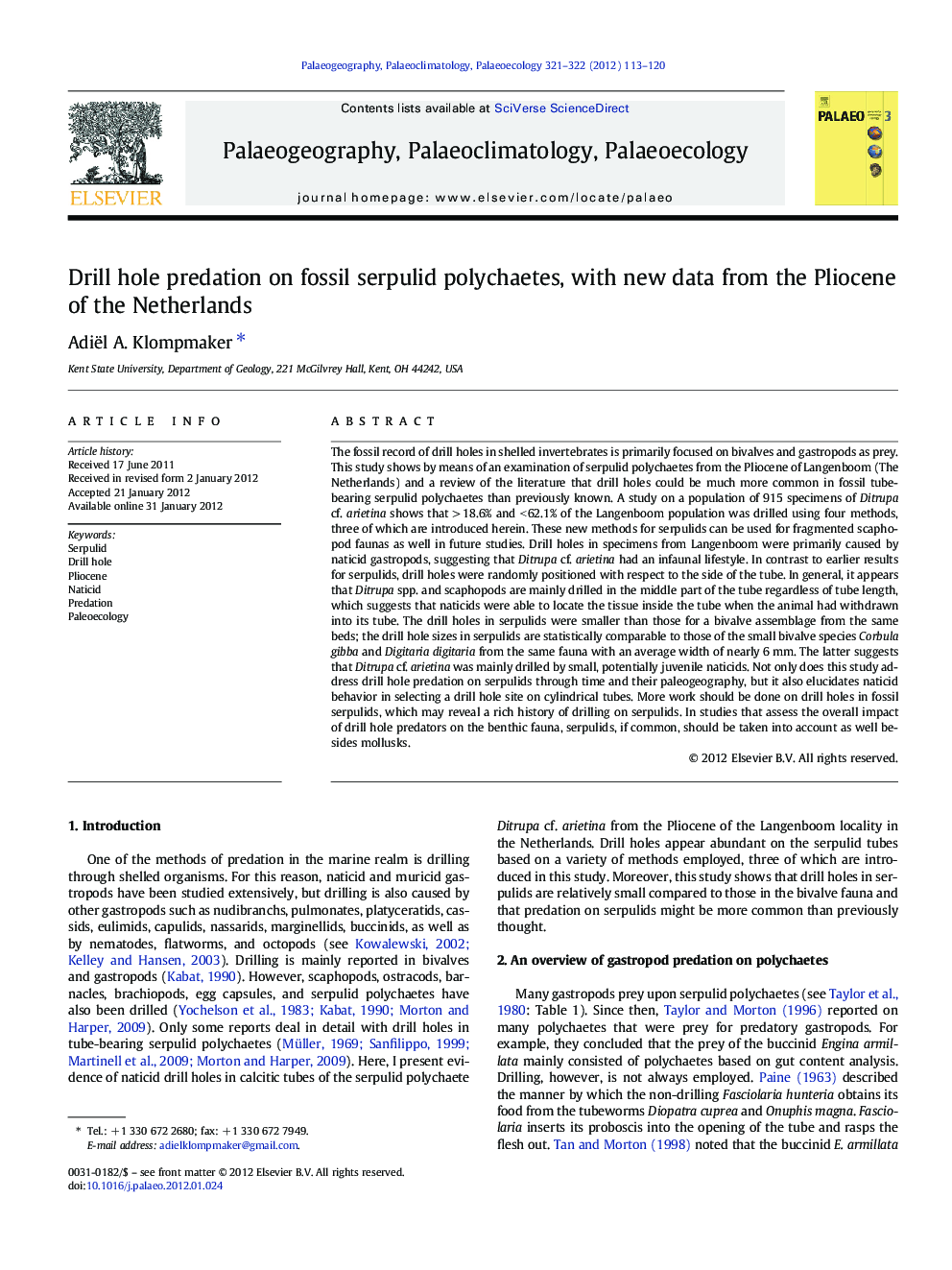| کد مقاله | کد نشریه | سال انتشار | مقاله انگلیسی | نسخه تمام متن |
|---|---|---|---|---|
| 4467001 | 1622238 | 2012 | 8 صفحه PDF | دانلود رایگان |

The fossil record of drill holes in shelled invertebrates is primarily focused on bivalves and gastropods as prey. This study shows by means of an examination of serpulid polychaetes from the Pliocene of Langenboom (The Netherlands) and a review of the literature that drill holes could be much more common in fossil tube-bearing serpulid polychaetes than previously known. A study on a population of 915 specimens of Ditrupa cf. arietina shows that > 18.6% and < 62.1% of the Langenboom population was drilled using four methods, three of which are introduced herein. These new methods for serpulids can be used for fragmented scaphopod faunas as well in future studies. Drill holes in specimens from Langenboom were primarily caused by naticid gastropods, suggesting that Ditrupa cf. arietina had an infaunal lifestyle. In contrast to earlier results for serpulids, drill holes were randomly positioned with respect to the side of the tube. In general, it appears that Ditrupa spp. and scaphopods are mainly drilled in the middle part of the tube regardless of tube length, which suggests that naticids were able to locate the tissue inside the tube when the animal had withdrawn into its tube. The drill holes in serpulids were smaller than those for a bivalve assemblage from the same beds; the drill hole sizes in serpulids are statistically comparable to those of the small bivalve species Corbula gibba and Digitaria digitaria from the same fauna with an average width of nearly 6 mm. The latter suggests that Ditrupa cf. arietina was mainly drilled by small, potentially juvenile naticids. Not only does this study address drill hole predation on serpulids through time and their paleogeography, but it also elucidates naticid behavior in selecting a drill hole site on cylindrical tubes. More work should be done on drill holes in fossil serpulids, which may reveal a rich history of drilling on serpulids. In studies that assess the overall impact of drill hole predators on the benthic fauna, serpulids, if common, should be taken into account as well besides mollusks.
► Drill hole predation intensities on fossil tube-bearing serpulids are not well known.
► 915 Pliocene specimens of Ditrupa cf. arietina from the Netherlands were studied.
► The drill hole predation intensity is > 18.6 and < 62.1% based on four methods.
► Drill holes in serpulids are mainly caused by small, potentially juvenile naticids.
► Naticid drill holes could be more common in fossil serpulids than previously known.
Journal: Palaeogeography, Palaeoclimatology, Palaeoecology - Volumes 321–322, 1 March 2012, Pages 113–120